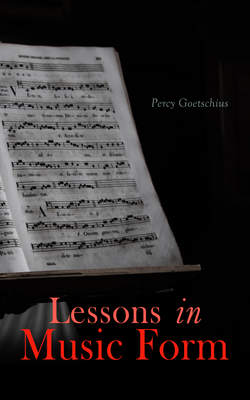Читать книгу Lessons in Music Form - Percy Goetschius - Страница 12
На сайте Литреса книга снята с продажи.
[Illustration: Example 3. Rhythm.]
ОглавлениеTable of Contents
The first measure of this hymn is, by itself, merely an exponent of the metric principle, for it consists of three uniform quarter-notes. The second measure, however, is a rhythmic one, because, by dotting the first of the three beats, three different time-values are obtained (dotted quarter, eighth, and quarter). Further, by association and comparison with each other, both measures assume a collective rhythmic significance.
The rhythmic disposition of the tones is to a certain extent optional with the composer, but by no means wholly so; the rules of rhythm are probably the most definite and obvious of all the rules of music writing. They do not concern the analytical student intimately, but at least the general distinction between regular and irregular rhythm should be understood:—We have seen that the natural accent (the "heavy" pulse) is invariably represented by the first beat of a rhythmic group; and that one or two lighter pulses intervene before the next accent appears. Further, it is self-evident that the rhythmic weight of a tone is proportionate to its length, or time-value; longer tones produce heavier, and shorter tones lighter, impressions. The deduction from these two facts is, then, that the rhythmic arrangement is regular when the comparatively longer tones occupy the accented beats, or the accented fractions of the beats; and irregular when shorter tones occupy the accents, or when longer tones are shifted to any comparatively lighter pulse of the measure or group.
The rhythm of the second measure in Ex. 3 is regular, because the longest tone stands at the beginning of the measure, thus confirming (and, in fact, creating) the accent. The rhythm in Ex. 1 is also regular, throughout, the light eighth-notes occupying the light third beat, and the heavy dotted-quarter the heavy pulse (in the third measure). Ex. 2 is strikingly definite in rhythm, because the time-values are so greatly diversified; and the arrangement is regular.
On the other hand, the following is an example of irregular rhythm:
